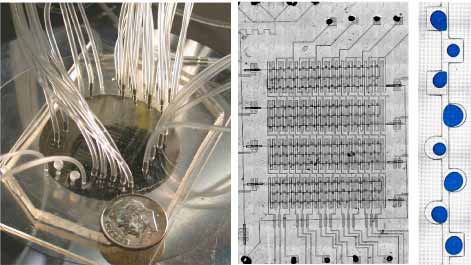Protein crystalization using microfluidics:
We are developing the Phase Chip, a high-throughput, low-volume microfluidic device to serve as a generic platform to measure the phase diagrams of a wide variety of multicomponent and complex fluids. One class of phase transitions we are studying is protein crystallization. Protein crystals are necessary in order to determine protein structure using x-ray diffraction; often the crystallization step is the bottleneck in structure determination. In September 2006 we received a R21 grant from NIH-NIGMS whose specific focus is membrane protein crystallization, the most recalcitrant class of proteins.

Of the 10,000 human membrane proteins, representing one third of the genome, only one has had it structure solved using x-ray diffraction. One important class of human membrane proteins, the G protein-coupled receptor, is the target of 50% of all marketed drugs. Although there are 1000 members of the Gpcr family, none have been crystallized. The Phase Chip has been specifically designed to solve the two major problems which confront the crystallographer in this quest: to minimize sample volume and to separate the physical processes of crystal nucleation and growth.
One of our main goals is developing microfluidic technology to study protein crystalization in drops, as you can watch on the video:
Drops stored in a capillary where protein crystallizes